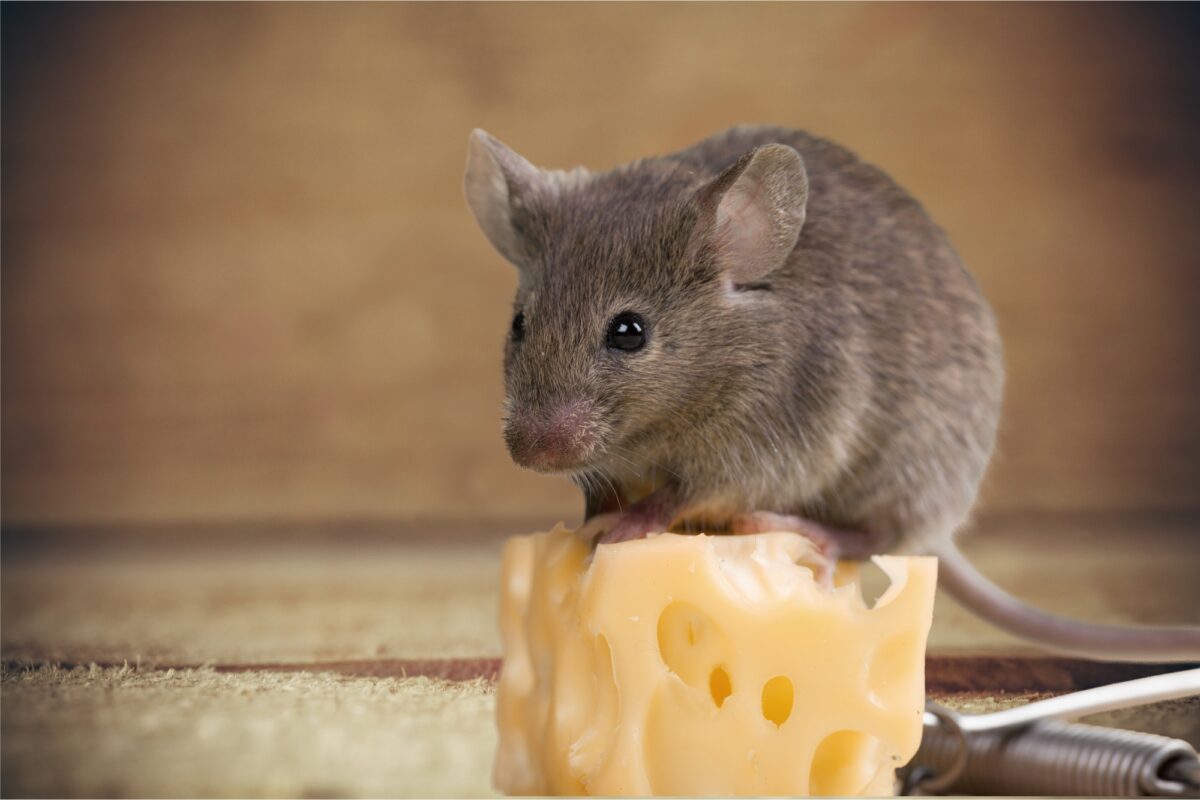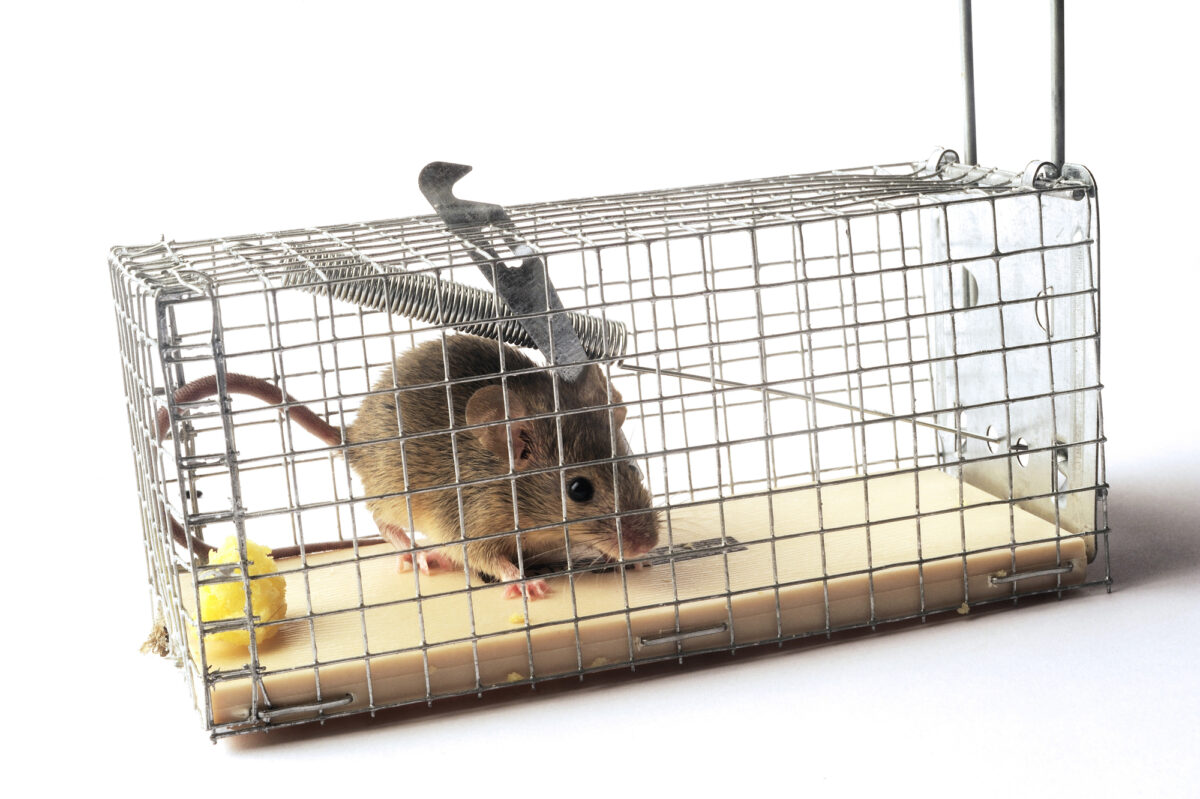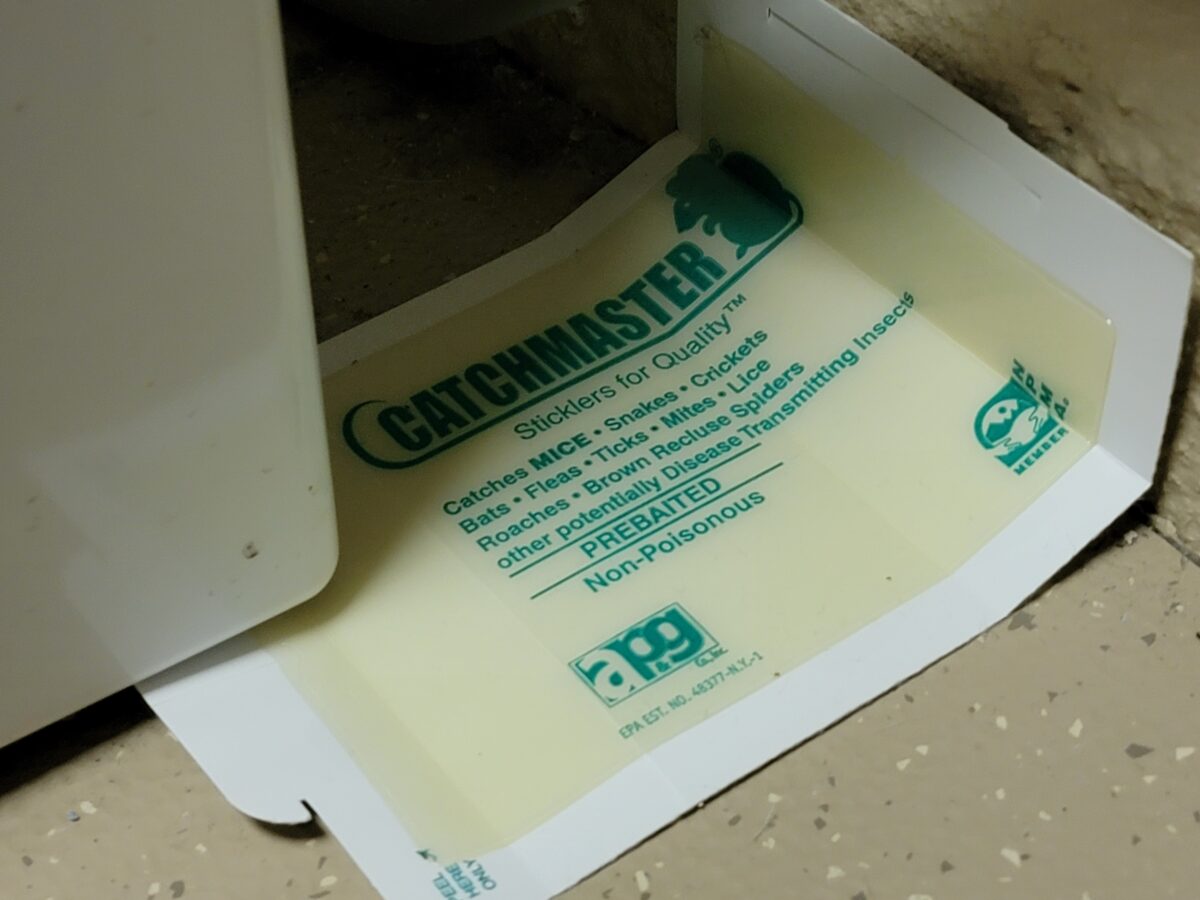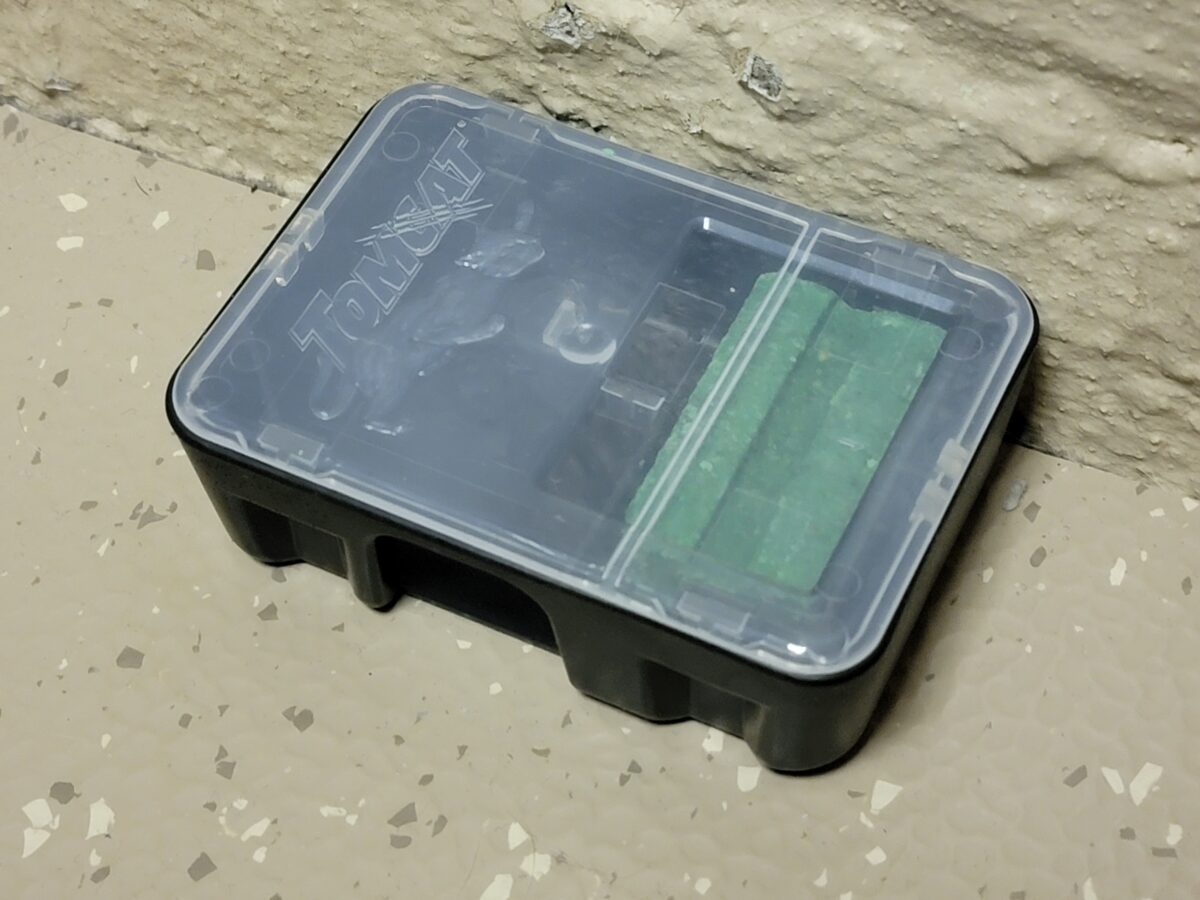Disclaimers: Our site uses demographic data, email opt-ins, display advertising, and affiliate links. Please check out our Terms and Conditions for more information.
If there is one problem every homeowner and renter will likely encounter at some point, it is spotting a mouse in the house. One study has suggested that almost 15 million people have spotted rodents in their houses in the last year alone (~12% of occupied housing units!), which suggests that, given enough time, this problem will be experienced by everyone no matter the house size, location, age, and more.
We are no strangers to seeing a mouse in our house. This typically happens in the winter every year when mice look for warmer residences, and our 100+ year-old house has no shortage of openings that a mouse could crawl into.
As such, whenever we see signs of having a mouse, we turn to our trusty assortment of mouse traps to begin the eviction process. So in this one, we thought we'd share the pros and cons of some mouse traps we've tried, share what works best, some downsides you may not think about, and explain why baiting a trap is an absolute must.
Signs You Have Mouse Problems
If you are reading this post and think you have a mouse problem, odds are good that you are right. But we'd be remiss if we didn't start this one out with signs that you may have a mouse in your house. These include the following:
- Seeing small holes chewed through food containers
- Finding more concerning holes chewed through electrical appliance cords
- Mouse droppings in specific areas of your house
- Tiny holes in your wall that were not otherwise there
- …and perhaps the worst one of all- seeing a mouse scurry across a floor
We've had all of these happen in our house, and whenever we do, we know it is a sign to start being more strategic with our mouse trap efforts. The eviction campaign begins.
Humane Mice Traps
Humane mouse traps are a broad name that may cover an array of products, but ultimately all revolve around a single key feature- they trap, but do not kill, the mouse.
In most cases, these traps allow mice to enter but, through a specific function, do not allow the mouse to escape. One we have personally used has a lever at the entry that looks a bit like a teeter-totter. The mouse is coaxed in with bait, walks on the ramp, and when it steps off, the mechanism closes and effectively traps the mouse inside. Others utilize a spring function like a conventional trap, but rather than hurting the mouse, the spring blocks off the entry.
No matter the internal function, these traps operate somewhat simply- you add bait inside, wait for a mouse to go inside and trigger the trap door, and then it is up to you to take them at least two miles (~3.2 kilometers) away from your house to release them.
The pro to this one is that it is the only humane method on this list- the mouse will not die insofar as you release it in a timely manner. The cons are simply that you are required to release the mouse back into the wild at a sufficient distance away (or else it may find its way back to your house) and that mice are smart enough that they may recognize a new, fairly bulky object and treat it with suspicion. As such, a good bait here may be necessary, too.
To pick up a humane mouse trap, click here.
Sticky Traps for Mice
On the opposite end of the spectrum, we have mice glue strips. These are adhesive-backed pads or thin cardboard designed to cause a mouse to stick to it when it runs across.
These can come in many designs with some being flat strips that rest on the ground and others being foldable to make a small tunnel with adhesive on all sides. But ultimately, all of them rely on the same final principle- trapping a mouse with glue.
Being strategic with the placement of these will dictate the odds of success. Most resources suggest that mice like to walk along a wall in a house, so laying a sticky pad out along a floor/wall interface may be a good idea. Likewise, if you know a spot where a mouse has been frequenting (e.g. inside a pantry as we once had), a well-placed strip in a tight space may be what it takes to catch your prey.
The pros to this one are that sticky strips are cheap, can come in large quantities per park, and can also catch other pests like ants and spiders in addition to mice (we catch more spiders in ours than anything!). The downside to these traps is that mice can often tell when a new object is in the way and avoid it (hence why a tight space location may help) and that it does not kill the mouse. We once caught a tiny field mouse in one of these strips, and it was still alive and visibly struggling until we ultimately dispatched it. Not ideal for those who value humane animal treatment- even if it is a pest.
To pick up sticky mouse traps, click here.
Traditional Snapping Mouse Traps
Next, we have the traditional mouse trap you likely have seen for decades. These, which come in plastic or old-fashioned wood, involve a trap that causes a grooved piece of plastic or metal bar to come down and, through kinetic force, snare and kill a mouse on impact.
These traps typically need to be baited as, despite being small, they are often raised slightly off the ground and are not natural for a mouse to walk on. When a mouse steps on the spring in the center to get the bait, the spring is tripped, and a quick capture and, likely, death is imminent.
Of the two styles (plastic and old-fashioned wood), we almost always opt for the plastic models when possible. First, they are easier to set and are less likely to go off in our hands-on accident. Second, when they clamp down, the entire unit tends to stay in place more and, in our experience at least, seems to trap mice with better success. Out of all of the methods listed within this article, plastic snapping mouse traps with bait are by far the ones we've been most successful with.
That being said, the inherent downside with these is that the mouse is subsequently not trapped inside of a box. We are always in for a little gruesome surprise when we discover our little pest trapped, and we don some plastic gloves and get a small trash bag to properly dispose of the remains (a chore that Angie absolutely refuses to do and I get volunteered for 100% of the time).
Variants of these traps do exist where the mouse is contained within a plastic box as well; however, whether or not these are reusable may be up for debate. If you are buying a mouse trap where you can get rid of the mouse without seeing it, odds are good you aren't going to take the effort to open a trap and dispose of a body to get extra use out of it.
To pick up a traditional mouse trap, click here.
Mouse Poison Traps
Finally, we come to traditional poison-laden traps. While you can buy straight rat poison and put it out in an exposed area, this becomes a risk for other animals (such as pets) in the same space. Specialty traps typically involve a small plastic case in which the poison pellets are placed and a hole large enough for a mouse to enter. The mouse enters, eats some poison, walks away, and later dies once the poison's effects kick in.
While we have personally tried poison traps, we can never say if they work. Sure, you can tell if a mouse has nibbled on a poison block (sometimes, at least), but when a mouse likely goes into the walls or crawl spaces and dies, you never can be sure.
This raises the question of whether you want a mouse to possibly die in some unknown region of your house, to which we think most people will say a resounding no. Likewise, if a poisoned mouse leaves your house and is subsequently eaten by another animal (when alive or dead), you risk poisoning other predators up the food chain if it ate enough poison.
As such, we're not fans of this one.
To pick up poison mouse traps, click here.
The Best Bait for Mouse Traps – Don't Skip This Step
As mentioned above, several of the traps discussed above may do a great job at trapping a mouse that happens to pass through it, but most typically do not attract the mouse to begin with.
Being naturally cautious and intelligent, mice may see and treat a newly placed trap with suspicion. They may get close to try and see what it is, but not close enough to trigger the mechanism that causes them to be trapped. As such, you must bait mouse traps with an appealing item that would cause a mouse to take an extra step into your trap. Items like cheese or peanut butter may do the trick.
We've had mixed results with some of these because if an item is light and free moving, a mouse may be able to pick it up and run off without putting weight on the trigger (this has happened to us several times with traditional traps). Perhaps the best mouse bait is attractant gels from trap companies like Tom Cat or The Big Cheese Mouse Trap. These are specially formulated to have aromas that mice like and are sticky enough to require a mouse to get well onto the trap to eat it (a little dot right on the trap's center is all it takes).
I will be the first to admit that I was skeptical about a gel like this, but after two weeks of fighting to capture a mouse with other methods mentioned above, we caught our little menace in a baited snap trap the very first night after picking up this gel. Will you be as lucky? We can't say for sure, but we were shocked at how effective this one was.
To pick up mouse bait, click here.
Eliminate How Mice Get Into Your House
Ultimately, while getting rid of a mouse in your house may solve the current rodent problem, it does not solve the underlying issue that mice are still finding their way into your property.
Whether this is an isolated incident or a recurring problem indicative of a mouse infestation is a bit immaterial as, if even just one mouse found its way in, another is sure to follow. The question is not if but rather when. Depending on the problem's frequency, you may need to hire an expert to “mouse-proof” your house. Specialists here will go through your house and seal up any small holes, be it a crack in a shingle on your roof, a broken screen on an exterior vent, sealing up around doors, and more.
We, personally, have not reached this stage yet with our own house, but a few friends have and had nothing but praise for this investment- especially after having a recurring mouse problem in an old house that never seemed to end.
In the interim, you can also employ mouse deterrents to help any would-be residents avoid key areas of your house. Mice are said to be sensitive to things like peppermint oil, mothballs, vinegar, and ammonia, so strategically placing mouse deterrents could also be an option. (Find more mouse deterrents here.)
But ultimately, if you have signs of a mouse in your home, odds are good their residency is semi-permanent. So while a deterrent may keep them away from prized areas for a while, you will likely still need to roll out a mouse trap for a formal eviction.
Have you caught a mouse using one of the above methods? Comment below to share your experience!







